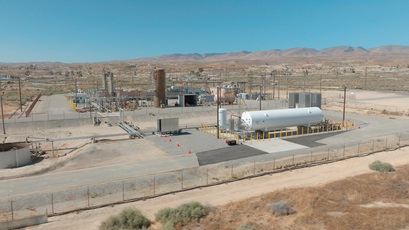emissions solutions
powering the energy transition
3 min read | august 01, 2020
On July 30, Chevron announced an agreement with Algonquin Power & Utilities Corporation, a Canada-based renewable energy provider, to codevelop renewable power projects that provide electricity to strategic assets across Chevron’s global portfolio.
Under the four-year agreement, Chevron seeks to source more than 500 megawatts (MW) of its existing and future electricity demand from renewable sources. This represents the latest, and largest, advance in Chevron’s efforts to integrate renewable power into our business in support of our operations.
together we will generate
>500
megawatts of renewable energy
enough to power
400,000+
U.S. households

allen satterwhite
president of Chevron pipeline & power
“By partnering with our business units across the globe, this agreement will enable us to build renewable power projects on Chevron land to provide energy for Chevron operations, thus helping to cost-competitively reduce the carbon footprint of our operations,” said Allen Satterwhite, president of Chevron Pipeline & Power.
Initial projects are focused on powering Chevron Upstream assets in the U.S. Permian Basin (Texas and New Mexico), Argentina, Kazakhstan and Western Australia. Projects that are built on Chevron land and that directly serve Chevron operations will have priority. Initial projects are expected to be in construction within the four-year agreement time frame, beginning in 2021.
addressing climate change
The new framework agreement with Algonquin Power & Utilities Corporation supports Chevron’s commitment to address climate change by lowering carbon intensity cost efficiently, increasing renewables in support of our business and investing in the future to target breakthrough technologies. It builds on several previous actions to use renewable power to reduce the carbon intensity of our operations.
chevron's energy transition focus areas are:
lower carbon intensity cost efficiently
increase renewables in support of our business
invest in the future targeting breakthrough technologies
In 2019, Chevron and its partners began construction on a solar power project that will supply the company’s Lost Hills production in Kern County, California, with more than 1.4 billion kilowatt-hours of solar energy over the 20-year potential term of the agreement.
In addition, last year Chevron signed a 12-year power purchase agreement to provide the company’s operations in the Permian Basin with approximately 65 MW of renewable electricity sourced from a new West Texas wind farm.
The GHG emission intensity reduction metrics apply to all upstream Chevron oil and natural gas, whether Chevron has operational control or not. As global demand for energy continues to grow, Chevron is committed to supporting affordable, reliable, ever-cleaner energy. Meaningful action toward this goal is one way we uphold our Chevron Way commitment to protect the environment and be the energy company most admired for its people, partnership and performance.
topics covered
related content
-

 satellite-monitoring campaign highlights power of collaboration
satellite-monitoring campaign highlights power of collaborationemissions solutionsnovember 11, 2024
-

 stable natural gas policy, balanced conversation needed, says chevron CEO
stable natural gas policy, balanced conversation needed, says chevron CEOemissions solutionsseptember 19, 2024
-

 lower carbon gas turbine first to hit major milestone
lower carbon gas turbine first to hit major milestoneemissions solutionsseptember 04, 2024
-

 1st US hydrogen-powered passenger ferry open for business
1st US hydrogen-powered passenger ferry open for businessalternative fuelsaugust 23, 2024
chevron email updates
Subscribe to our newsletter to receive news and updates.



